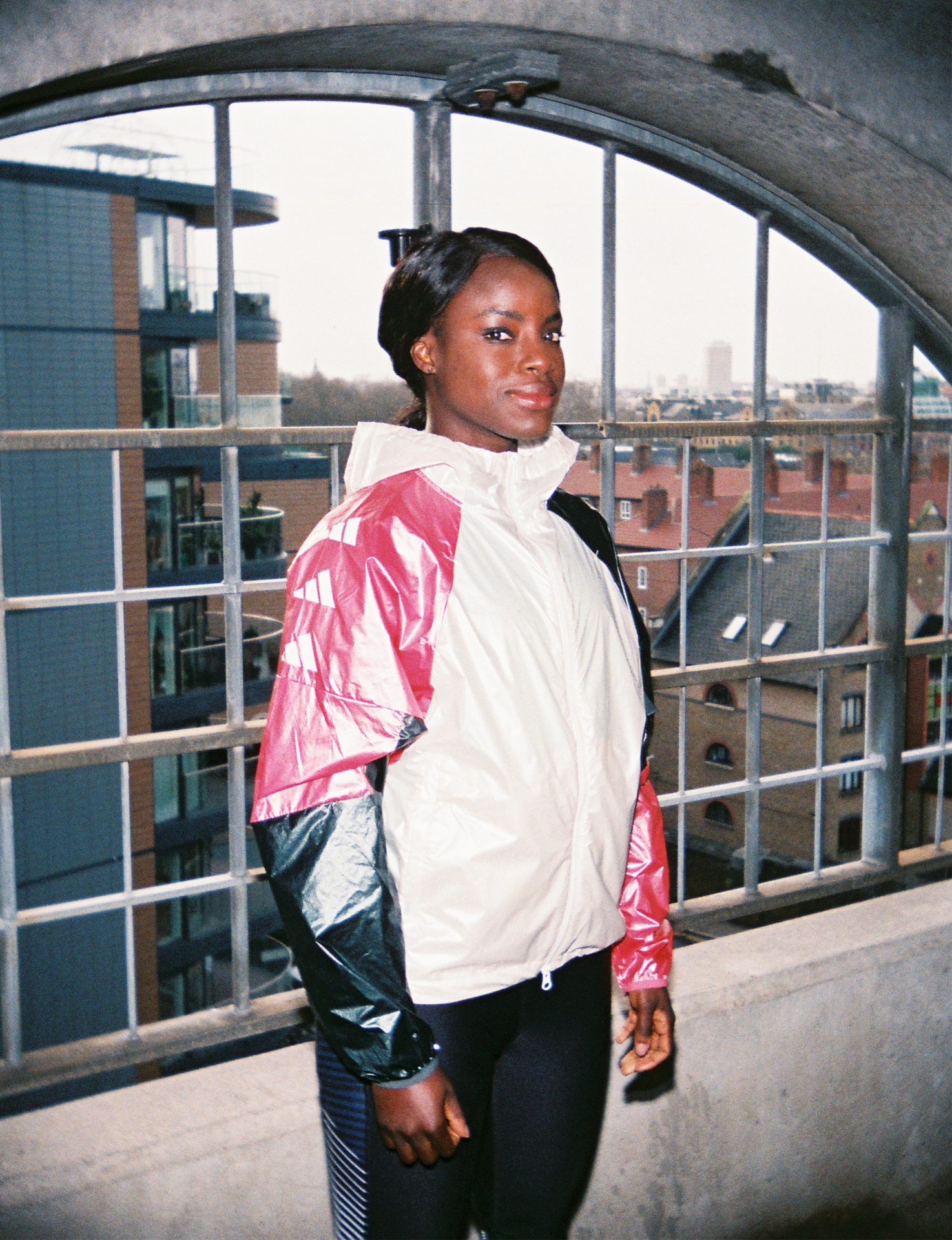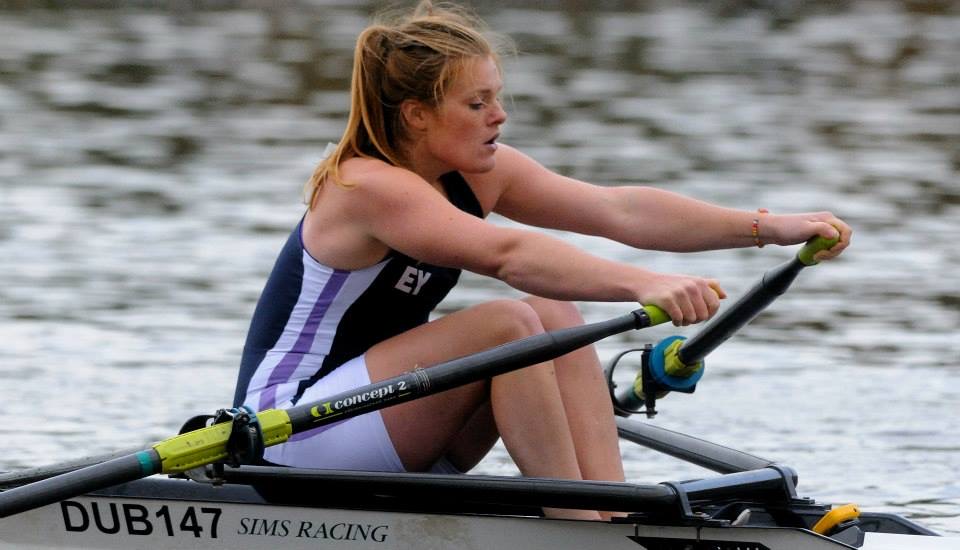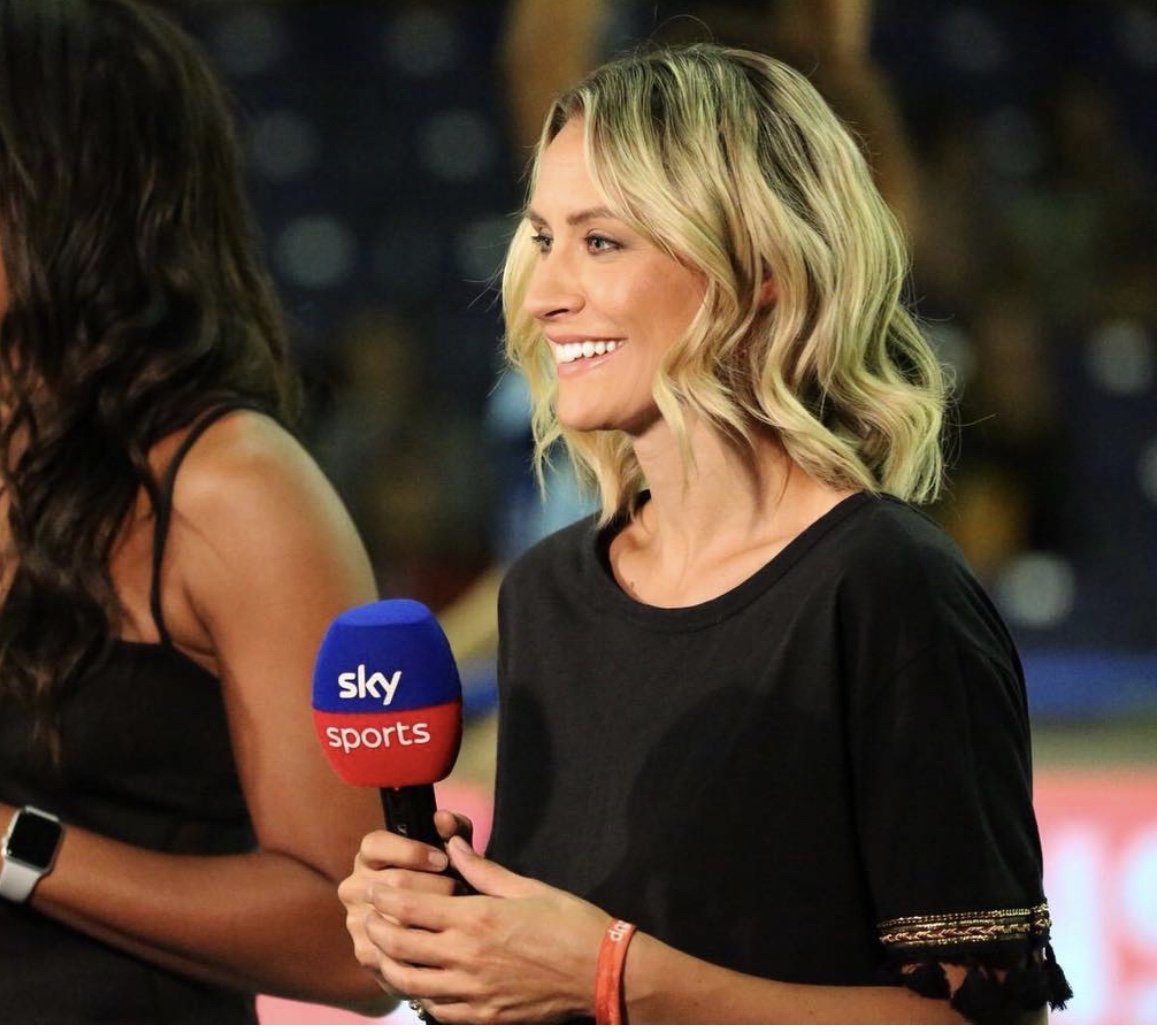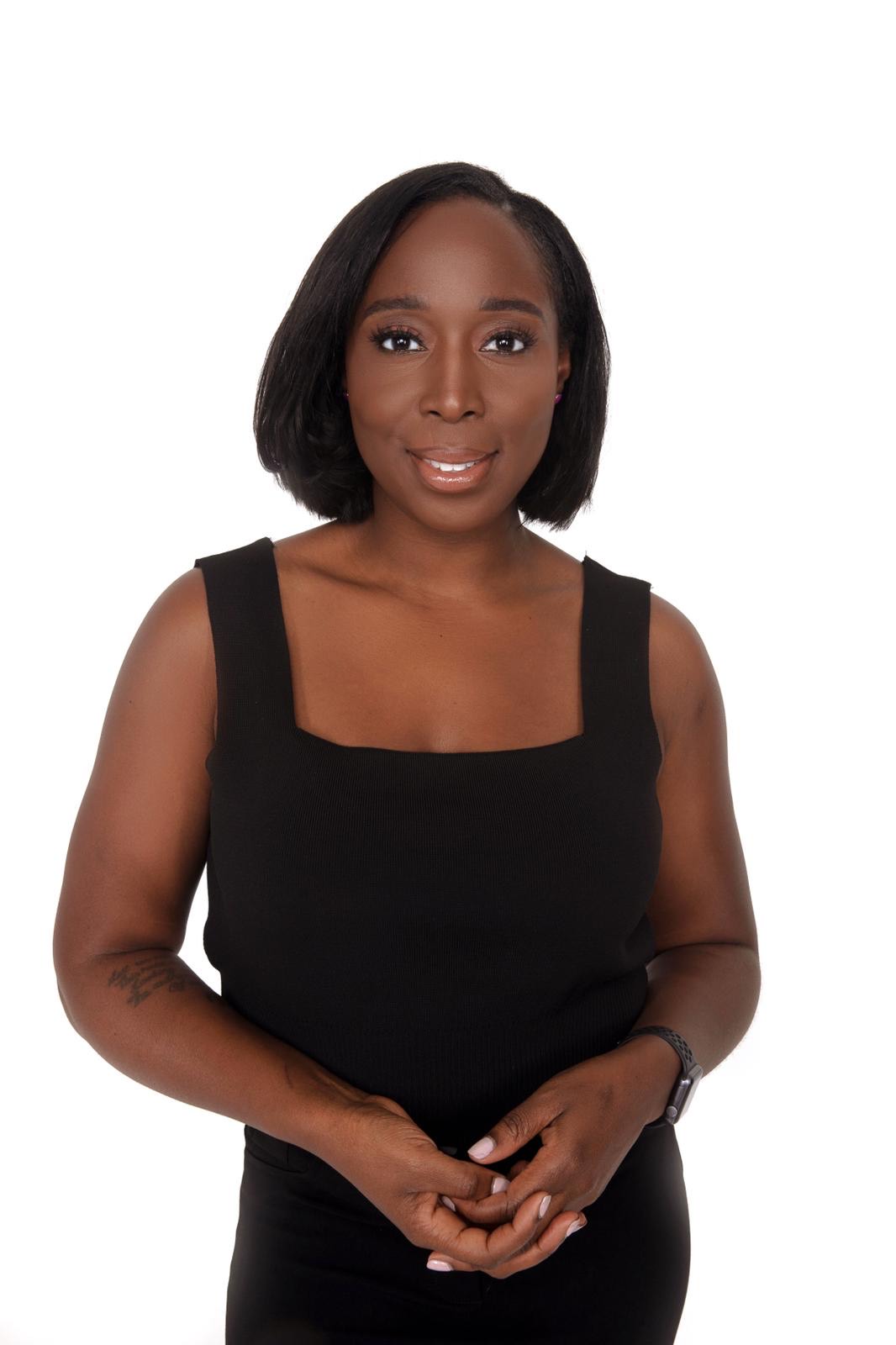Professional sportswomen know a thing or two about pushing their bodies to the limits. But how do you develop a nourishing relationship with your body when you’ve been trained to see it as a tool? Writer Tiwa Adebayo talks to five elite athletes about their journeys towards self-love and how the rest of us can learn to better appreciate our bodies.
Professional athletes are often encouraged to see their bodies as tools, well-oiled vehicles for sporting success. Although sport can provide an important refuge from unrealistic and misogynistic beauty standards, women still frequently face scrutiny on the global stage and are under pressure to push their bodies to the limit – causing female athletes, in particular, to struggle to find a balance between performance and body positivity.
The road to self-acceptance can be seemingly endless but going from an Olympic level of physical fitness to everyday life and even motherhood does bring about a certain perspective. We spoke to five elite athletes on what they’ve learnt during their body image journeys so far and their advice for other women hoping to practise self-love.
You may also like
“I’m grateful for the body positivity movement, but I still want to lose weight”
Eniola Aluko – football

Growing up as one of the only girls in her area, FA Cup-winning footballer Eni used sport as a way to fit in. Despite knowing from an early age that she had an extraordinary talent, she admits that she didn’t always see herself playing professionally. “I didn’t grow up thinking I’d be a professional footballer because they just didn’t exist – women’s football wasn’t professional,” she recalls.
The lack of professional role models certainly didn’t hold Eni back, and she went on to have an illustrious career competing as part of the 2012 Great Britain Olympic team and winning the Women’s Super League three times with Chelsea FC.
With such huge success inevitably comes scrutiny. Eni acknowledges that she was “a lot more conscious of it than I probably should have been,” and part of that was to do with lingering issues around racial stereotyping. She says that because she was a fast athlete, she had well-honed glutes and other lower body muscles which, although expected and applauded, “became a bit of a trope that I was very hyper-aware of.”
At times, finding the line between peak performance and unhealthy body image has been challenging for the former England forward. She recalls a particular team set up in which players were required to post their weight publicly daily. “After I came back, I’d internalized all of that, so I found myself wanting to weigh myself every day because that’s what had been presented as high performance.”
Since retiring, Eni has learnt to focus more on the lifestyle benefits of keeping active as opposed to constantly counting kilos, a move she says has had immeasurable benefits. “For me, exercise is great for determining how I feel about myself. Having body image as the main reason is not it for me.”
Key tip
“It all starts with you. When you sit down with yourself, say ‘what makes me feel good?’ Then you’re on the right track.”
You may also like
Misogynoir in fitness: Why Black women deserve better support in the fitness industry
Camilla Hadland – rowing

As part of the first-ever gold medal-winning British female crew at the Junior World Rowing Championships, Camilla Hadland became accustomed to success at the very beginning of her career. But even after such a momentous sporting achievement, it took longer for Camilla to see her body as “athletic”. “I still thought of myself as that cumbersome, larger girl – even though I was performing at a fairly high level,” she says.
Rowing, however, helped her find self-acceptance. “It was the positive reinforcement of being able to perform at such a high level.” Despite having a healthy attitude towards her body early on, things changed when Camilla stepped up her training to coincide with a new age category. “We were being weighed in every day, which can be quite overwhelming.” Narrowly missing out on selection for the U23 world championships drove Camilla to compare herself to others: “I saw myself as being a lot bigger than the other people in my crew.”
Although difficult, Camilla has since unlearned bad habits and managed to find a happy medium in retirement. “I’ve never cared less about what I look like than I have done in these last couple of years,” she says. “The fact that I’ve been through almost all levels and done the elite athlete stuff has given me perspective on what it means to be healthy.”
Key tip
“Seek out the right information and be confident enough to push back and ask questions. We don’t ask enough questions about what it’s like to have a healthy body.”
Tamsin Greenway – netball

With 67 England caps, seven Super League titles and three international medals to her name, Tamsin Greenway has achieved just about all there is to achieve in netball. One thing she loves about the sport is its diversity: “You’ve got so many different body types and that’s where it’s been quite special – to see that ‘fit and healthy’ comes in all different shapes and sizes.”
Despite that, however, netballers aren’t immune to the pressures of being women in sport. Tamsin remembers that outside scrutiny coupled with performance metrics tied to weight did have an impact, with skinfold testing being used to assess the player’s body fat percentage and, ultimately, selection potential. “It was the first time I started to think about what my target weight was and what I looked like,” she says.
It was an “unnecessary target” because of how varied the requirements are for different netball positions. As a coach, Tamsin has a different philosophy – encouraging her players to get into “physically the best shape that they want to be in… that benefits them on court as well.”
Making the adjustment from professional athlete to working mother hasn’t always been easy she admits: “It takes getting used to. I’ll always say to my other half, ‘I used to look like this’.” In learning to accept change, Tamsin maintains that self-awareness is key. “It’s about considering what you’re training for now. For me, it’s to be fit and healthy for my kids.” Even with her seven-year-old daughter, Tamsin is laying the foundations for future body confidence. “We talk about the positive side; she is big and strong, and that makes her super quick – so we encourage that by having sprint races.”
Key tip
“Don’t look at the end goal, just take each day as an opportunity to have a go at doing something new and feeling a bit happier about yourself.”
You may also like
Jessica Ennis-Hill’s tips on beating the blues with exercise
Stephanie Douglas – athletics

For Stephanie Douglas, becoming an international athlete was almost inevitable. “Looking back at it,” she says, “it was just normal for me.” As an athlete, she felt that a lack of information led her to “abuse” her body. “We weren’t so clued up on nutrition back then, we would just eat what we wanted to.” Despite this, she adds that she “was looking great, I felt fine about my body.”
Towards the end of her career, Stephanie was plagued by injuries – but it was the news that she was expecting her first child which led to her eventual retirement. “I went straight from being an athlete to being pregnant,” she says, going on to explain that her pregnancy shielded her from the initial shock of losing her carefully honed physique in retirement. It was only after the birth of her daughter that things began to change. “I’d just follow fad diets… trying to stay in the same shape and look how I did when I was running was really difficult.”
Realising that her approach wasn’t working, Stephanie committed to learning more about how to fuel her body. She’s currently studying for a degree in sport and exercise rehabilitation as well as reflecting on the lessons she’s learnt over the years and adapting them to work for her. Armed with a wealth of knowledge, Stephanie now uses her experience to help others by running an online (during lockdown) exercise class.
Key tip
“It’s all about habit and consistency. Whatever form of exercise you start with, just make sure to keep going.”
Jeanette Kwakye – athletics

At the 2008 Olympics, Jeanette Kwakye shocked many when she made the 100m final – cementing her position in British track and field history. “No one expected me to be there… to do it and do it on that stage was massive,” she remembers. For Jeanette, those few seconds were the culmination of years of hard work. “A lot of time was spent making sure that I was in a position to seize that moment when it came along, and I was really lucky that I did.”
As an athlete, she recalls “my body had a purpose, and that purpose was to run fast. Whatever it took… was my priority.” Although Jeanette had to work hard to maintain an optimum weight during her sprinting days, she says that that didn’t affect her body image; as long as she was performing well, the way she looked wasn’t an issue. And that healthy attitude was fostered with help from her coach and nutritionist, who were able to “use the right sort of language and make sure that it was a really positive experience.” Hers isn’t a universal experience though, which Jeanette says is “a shame because we are losing a lot of women to the psychological battle of body image when it comes down to sport.”
After a devastating achilles injury just before London 2012 led to retirement, she had to reevaluate a lot of things including her body’s purpose. “My body moved towards its natural state… everything was slowing down but I thought it was fine because this is where I needed to be. It was a psychological battle, but it was a good one,” she argues.
Key tip
“It’s about acceptance. Exercise has to come from a place of love.”
Take your fitness up a notch by joining one of the SWTC training plans. Let us know how you get on. It’s time to get strong!
Images: Salim Adam; AI Johnson; Clive Jones; Zute Lightfoot; Amzy Obr
Source: Read Full Article
